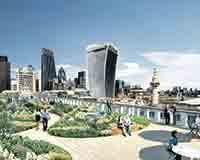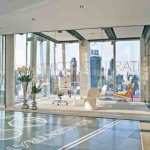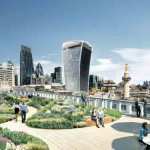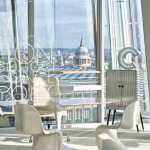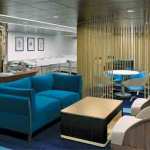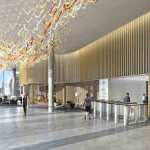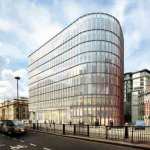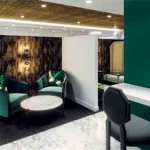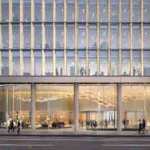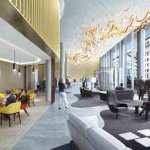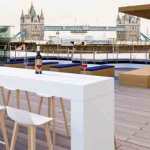In September the Raphael Vinoly-designed Walkie Talkie (20 Fenchurch Street) was awarded the infamous Carbuncle Cup, singling it out as the UK’s ugliest building this year.
But the announcement has been met with barely a shrug from the building’s letting agents, CBRE and Knight Frank. “The tenants love it,” says one. “After all, it is the fastest-letting building in London.”
Beauty, the saying goes, is in the eye of the beholder. But at a time when there is stiff competition to recruit and retain staff, what part does the building and workspace play in that process?
“Workplace is becoming a more important factor in retaining and attracting talent,” says Trevor Alldridge, head of workplace consultancy at JLL.
Alldridge argues that it is now part of “the grand trio”: location, building and workspace. “Beautiful and perfectly located buildings such as the Gherkin can work like a powerful magnet to attract the best staff,” he says.
Kathryn Yardley, recruitment consultant at Cranberry Panda, agrees: “You don’t have to work hard to persuade someone to be interested in working in the Walkie Talkie, or in Shoreditch.”
But that also works the other way. Giles Fuchs, chief executive of serviced office firm Office Space in Town, believes that our office environment affects not just our creativity and efficiency at work, “but even our desire to work for a company at all”.
The rare talents and top-earners, says Richard Saul, leasing director at HB Reavis UK, which is developing offices on King William Street in the City, are forcing employers to place increasing emphasis on the correlation between the working environment and employee satisfaction and performance.
“The design and overall quality of the building is now fundamental in attracting high-calibre occupiers,” Saul says.
The wrong sort of space simply will not attract the right sort of applicant. “Research,” Fuchs adds, “shows that cash is no longer king when it comes to attracting top talent.”
He is not wrong. According to a study by the American Society of Interior Designers (ASID) on the effect of workplaces on staff recruitment and retention – Recruiting and retaining: qualified employees – by design – 41% of surveyed employees said that the physical workplace will affect their decision to accept a position.
For those already employed by a firm, 51% said it was an important factor in deciding whether to stay or to leave. In the same study, 50% of employees who were thinking about changing jobs in the following year mentioned workplace as a significant factor.
But perhaps more illuminating are the responses of the kind of employees that firms are most keen to recruit and retain – those with specialist skills or major talents. ASID found that, when it comes to the most talented employees, a 10% difference in remuneration means very little compared with the benefits of a well-designed, well-located and functional workplace in an iconic building.
“Having a building that demonstrates your personality, coupled with the proximity of like-minded neighbours, is vital to attracting and retaining talent,” says Sam Sahni, head of workplace consulting at Morgan Lovell.
“Whether your organisation is a slick city centre operation, a creative warehouse environment, or a large shed occupier, the envelope and interior architecture speaks a thousand words about who you are and what it would be like working for you.”
But this does not mean that you need an ivory tower to attract talent, or even a tower shaped like a Walkie Talkie, although some occupiers do gravitate towards towers (see feature, p30).
Indeed, the aesthetically appealing or trophy exterior may not be the key at all. Inner beauty seems to be more important. Marie Hickey, director in Savills’ commercial research team, asked office workers to identify those things that would determine their employment decision if all other factors (financial package) were the same.
Just 7% identified the external design of the building. “This is more important for Generation Z employees, who are just starting to enter the workforce,” says Hickey (see box). “And for those working in London.”
Workplace location was, perhaps unsurprisingly, the top-rated factor determining employment decisions. No one actively wants to work somewhere difficult or miserable.
A good instance of this is the major food firm that is shortly to open its UK digital hub in the heart of Shoreditch. While the building is naturally going to have a touch of the “Googles”, the location is the key to getting the staff it wants to attract.
What if you simply cannot get that super-sexy location that you desire? What if your requirement is too bespoke, too big or just too expensive to be possible in the cobbled streets of the hipster east?
In the Savills research, what trumped external design – by a considerable margin, at 31% – was the internal design or fit-out. “What this suggests is that an employer could be in a relatively unattractive building,” Hickey muses, “but as long as the internal fit-out is attractive, this should be enough to attract and retain talent.”
Argos faced considerable difficulties when it sought to attract the brightest and best in technology to its digital HQ in Milton Keynes. Instead, it shifted those offices to above its store on Vauxhall Bridge Road in London’s Victoria. It was not quite as sexy a spot as the edgy East End, but it allowed the retailer to attract a far larger pool of talent – and the interior is about as hip as it gets, as one former employer reports.
The light fittings are made from butcher’s hooks, and the staff kitchen is a full-sized shipping container, seemingly dropped into the open-plan space. Everything is fresh and fun and designed to appeal to generations Y and Z.
“We have noticed that creating a fantastic workplace in a great building creates a powerful pull, even if the office is placed well outside a city centre,” says Alldridge.
“If you can create a destination, a place where people can spend a great working day and have a fantastic work experience, you may very well succeed.”
However, with the fight for top-tier talent becoming increasingly bloody, it is those employers that can tick all three boxes – location, building and workspace – who will attract and retain the best.
EGL_171015_026-028
Playing the Generation Game
The young want breakout space and pool tables; the old want cubicles and freedom from the tyranny of hot-desking. How can the modern office accommodate the conflicting wants and needs of the X, Y and now Z generations?
“In my mind the most important trends that are emerging are in the attitudes of the workforce, rather than the workplace,” says Andrew Bugg, head of project and building consultancy at Knight Frank.
This is because, he says, the demographic of that workforce is changing. Recent research in the US shows that by 2020 Generation Y will make up more than half of the workforce.
As AECOM director Nicola Gillen points out, Generation Z is now arriving in the workplace – a generation of digital natives, who have been whelped on an understanding that the workplace should adapt to the workers, not vice-versa. And all of them have to rub along with the Generation Ys and the few remaining Generation Xs not yet enjoying their pensions. Trying to accommodate them all is the next decade’s big corporate challenge, says Gillen.
“The significance of this is the different attitudes towards work,” says Bugg. “This will define how successful companies will be in attracting and retaining the best talent.”
For this new generation, personal career progression, recognition for hard work and a good work/life balance are all seen as more important than remuneration. “Staff are becoming far more willing to move on if their company doesn’t meet their expectations, than they were in previous generations,” says Bugg.







